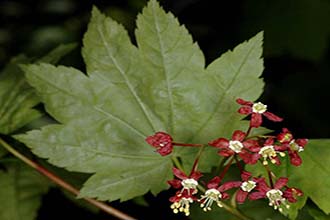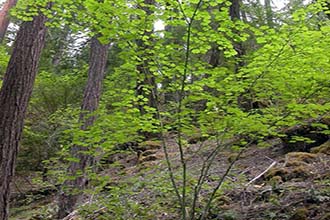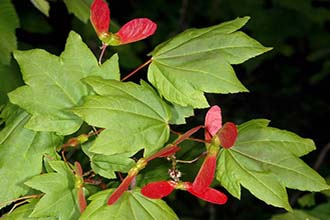Taxonomy: Kingdom - Plantae (plants). Subkingdom - Tracheobionta (vascular plants). Superdivision - Spermatophyta (seed plants). Division - Magnoliophyta (flowering plants). Class - Magnoliopsida (dicotyledons). Subclass - Rosidae. Order - Sapindales. Family - Sapindaceae (maple). Genus - Acer L. Species - Acer circinatum Pursh.
Ecology: Vine maple is typically an understory shrub found in both seral and climax Douglas-fir (Pseudotsuga menziesii), western hemlock (Tsuga heterophylla), western redcedar (Thuja plicata), Port Orford-cedar (Chamaecyparis lawsoniana), Sitka spruce (Picea sitchensis), and Pacific silver fir (Abies amabilis) forests on the west side of the Cascades. On the east side of the Cascades, vine maple occurs on moist bottoms in ponderosa pine (Pinus ponderosa) forests. The western hemlock/vine maple/western swordfern (Polystichum munitum) plant association is common throughout the Olympic, Cascade, and Coast Ranges of Oregon and Washington. Vine maple sometimes dominates or codominates talus slopes with Sitka alder (Alnus viridis ssp. sinuata). It is also common along streambanks and alluvial terraces, in forest openings and clearcuts, and on talus slopes and the lower portions of open slopes. Vine maple is found in both seral and climax stages of forest succession, but cover and frequency are highest in early seral stages.



